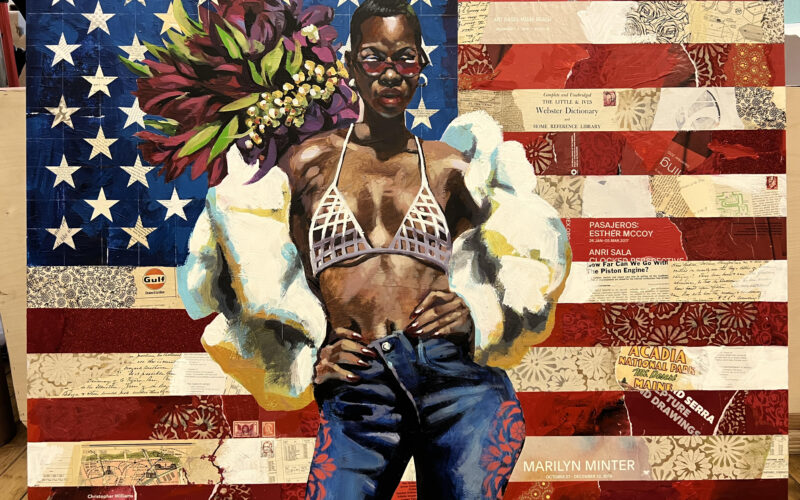This curated list of leading global galleries is dedicated to expanding how fine art can be viewed, received and used to teach cultural appreciation.
In this retrospective closing the long chapter of 2023, we consider 11 leading global galleries that stood out among fine art spaces worldwide and featured multimedia artists across race, gender and class. Like many others, these galleries champion their artists to embrace creative agency through personal and cultural exploration. How galleries support exploration can serve as an intergenerational push for cultural promotion and acceptance.
Here, we center on each gallery’s relationship with creative agency as a practice that gives artists the freedom to lucidly conceptualize their works. While art galleries and museums can offer some vertical mobility and visibility, they still function in an oppressive Western paradigm that both privatizes and commodifies expression for the sake of status.
Galleries can serve global communities by curating safe spaces. These spaces then can redefine an audience’s relationship with art and design beyond strict representations of consumption and wealth. This curated list of galleries is dedicated to expanding how fine art can be viewed, received, and used to teach cultural appreciation. Documented below, gallerists and curators share 2023 in review, what motivated their origins, and what distinguished them from other global galleries:
We’ll start abroad and center back on our home base.
- Addis Fine Art (London, United Kingdom)

Our first notable international gallery is the Addis Fine Art Gallery, located in London and Ethiopia. They serve the Horn of Africa by platforming and positioning East African artists. I spoke with the director of Addis Ababa London, Ikenna Malbert, and the co-founder, Mesai Haileleul about Addis’s position in the art world. By building a bridge between East Africa and the West, Addis Fine Art galleries fill a void of African art in Europe. Addis Fine Art takes a necessary risk by sharing artists whose work speaks to a specific East African cultural narrative, which is significant to see beyond the scope of continental Africa.
Lilac Burrell: Tell me the story and motivations behind founding Addis Fine Art Gallery.
Ikenna Malbert: Addis Ababa was founded in 2016 by Mesai Haleleleul and Rakeb Sile. The gallery was founded to bring a space and a gallery to exhibit artists from Ethiopia particularly, but more generally from neighboring countries that make up the Horn of Africa. We’ve always had some kind of space in the U.K. because Rakeb is based there; besides there, we’ve been based in Addis Ababa, Ethiopia. Up until 2020, the main space of the gallery was in Addis Ababa.
The space here (London) opened in [2020], but up until then, we were based in Ethiopia. That’s a huge distinguishing feature. Most galleries, if they exhibit African art, there will be a gallery that’s popped up somewhere in Europe or somewhere in America and exhibits African artists. But the main point of what we’re trying to do is to ensure that the ecosystem in Addis Ababa, where Mesai is, has its flourishing, because then that feeds into what we’re doing here in the West. Before we opened in 2016, there wasn’t a gallery that had such an international reputation as ours. That’s how we’re challenging the orthodoxies of the art world.
LB: What does success look like from your lens?
IM: Success looks like how much success are our artists getting and how much success are we achieving in furthering the gallery’s original mission, which is to put artists from the Horn of Africa and Ethiopia, especially on the biggest platforms possible. For example, if we get into major art fairs such as Frieze London or Liste Basel, that is a major stamp of success for us, because we’re able to exhibit some of our artists who have been with us from the very beginning on the biggest platform.
Mesai Haileleul: It’s a team effort, to be honest. We are very lucky in many ways that we have managed in such a short time. For a gallery, eight years is such a short time.
So much more than peddling art, Addis Fine Art galleries have a cultural and intellectual connection to their art that allows them to expand their mission in authentic and unique ways.
- Rele Gallery (Lagos, Nigeria)
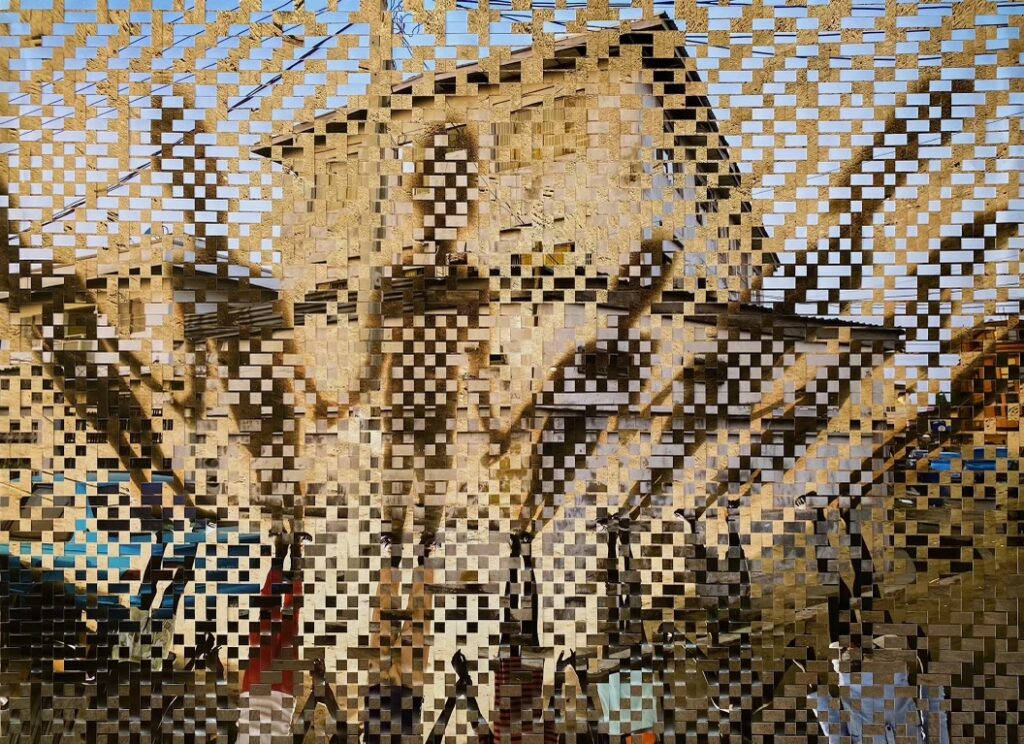
Cynthia Princess Okoro, the gallery manager at Rele Gallery in Lagos, Nigeria, started our conversation by sharing that Rele means “home.” The gallery’s centering on home informs how it makes relationships with artists and distinguishes itself from other galleries around the world. This is the first gallery on our list whose focus on mentorship makes the case for artistic development at any age.
LB: What really makes Rele Gallery unique? What makes you stand out?
Cynthia Princess Okoro: What you don’t get from every other gallery here in Lagos is that we have a program dedicated to young and emerging artists. There’s no other gallery here in Lagos that has that. So, we have a platform for the younger artists, and we have a platform for the older artists. It’s the fact that we want to grow with artists who we want to be with, and we must be invested in them. I think, if we’re able to maybe get one of the artists to speak, they would say that we have a family here at Rele.
LB: What about Rele Gallery drew you to work there?
CPO: Rele means home, right? So, we try to make it a very comfortable space, a very conducive space to be able to show different mediums of art. For us, really, we call ourselves a family. And the first thing that comes to us is the artists themselves before we talk about their work, so we’re very invested in the artists themselves. The process it takes to make their works, how they get into making a particular piece, or a story around it. We’re very invested in the story around the particular work. So that drew me in. It’s not something you find easily here. It’s very rare. So that drew me to the gallery.
LB: What’s your relationship to giving artists creative agency when expressing their ideas?
CPO: If I understand your question correctly, it’s what we do and how dedicated we are to push the artist’s creativity beyond where they are now. So, like the global audience, the international audience, and we do that with a lot of fairs. We (Rele) participate in fairs yearly. We mostly try to apply with these emerging artists so that their story is not just limited to a particular region or a particular country, we’re able to just tell your story as far and wide as we can. However, you want to tell your story, whichever way you want to tell your story, we’re very much available to tell that story and push it forward for the artist.
- Band of Vices (Los Angeles, California)
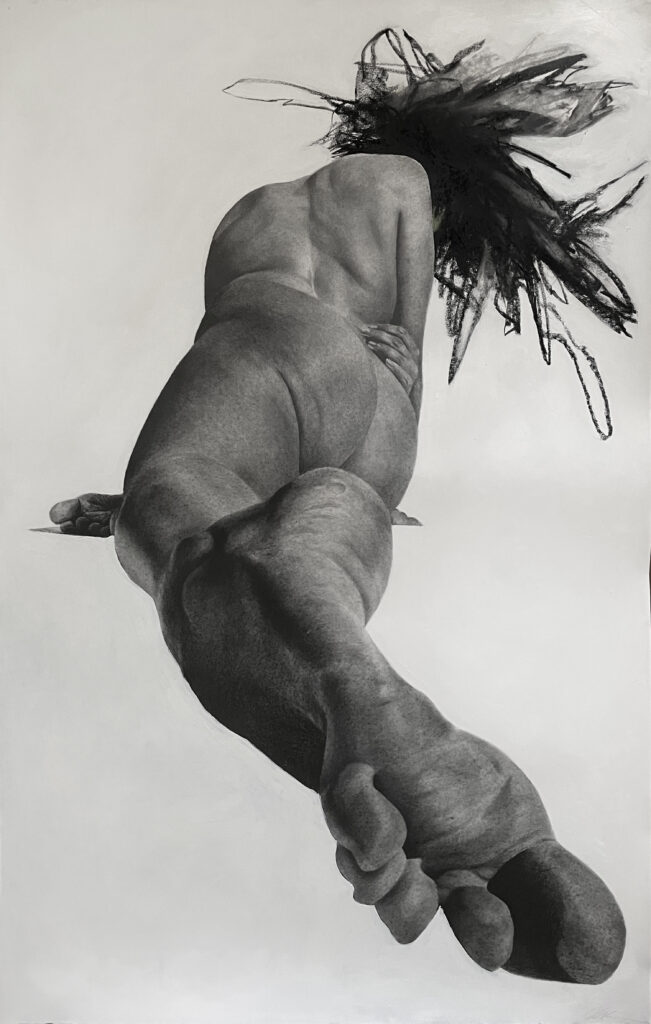
Terrell Tilford is the creative director and founder of Band of Vices. This gallery makes a case for community building through intentional space-making. Tilford takes his role as creative director seriously by curating space for art appreciation spiritually. He’s realized his higher purpose as a creative director and content strategist . Tilford considers Band of Vices a temple for visual artists. He hopes that this approach will empower artists to process their traumas and inform their art in healthy ways to mend their wounds.
LB: So, you started collecting when you were 16. You’ve collected from over 1,500 artists, and the gallery is still standing today. Who was the first person that you remember collecting? And who was the last person’s work that you collected that you were really excited about?
Terrell Tilford: That’s like trying to choose your kids. Francks Francois Décéus was the very first artist that I started working with. Haitian-born artists based in Brooklyn. He was the first cat that I vibed with in a real way. I don’t collect anything that I’m not impassioned about. I can’t remember what the last piece was. While I started with some of the modern masters, it quickly became personal to help support living artists as well.
LB: It sounds like community and giving back are key elements of your artistic practice, just like your intentions as a collector and a creative director. Does that sound right?
TT: We can’t do anything about the past, but we can certainly help shape the future. So much of my platform, so much of me using my voice in the way that I do, is to ensure that those who have historically been unseen, unheard, unrecognized, and whatever way, that we bring a sense of visibility to them, also while highlighting their personal journeys and gravitas and significance. They sit in the canon of a historical perspective but also in the contemporary art world. So many of them are already propelling their voices toward the future. So, my job is to weave all of that together and to help amplify that on their behalf.
- Mariane Ibrahim (Chicago, Illinois)
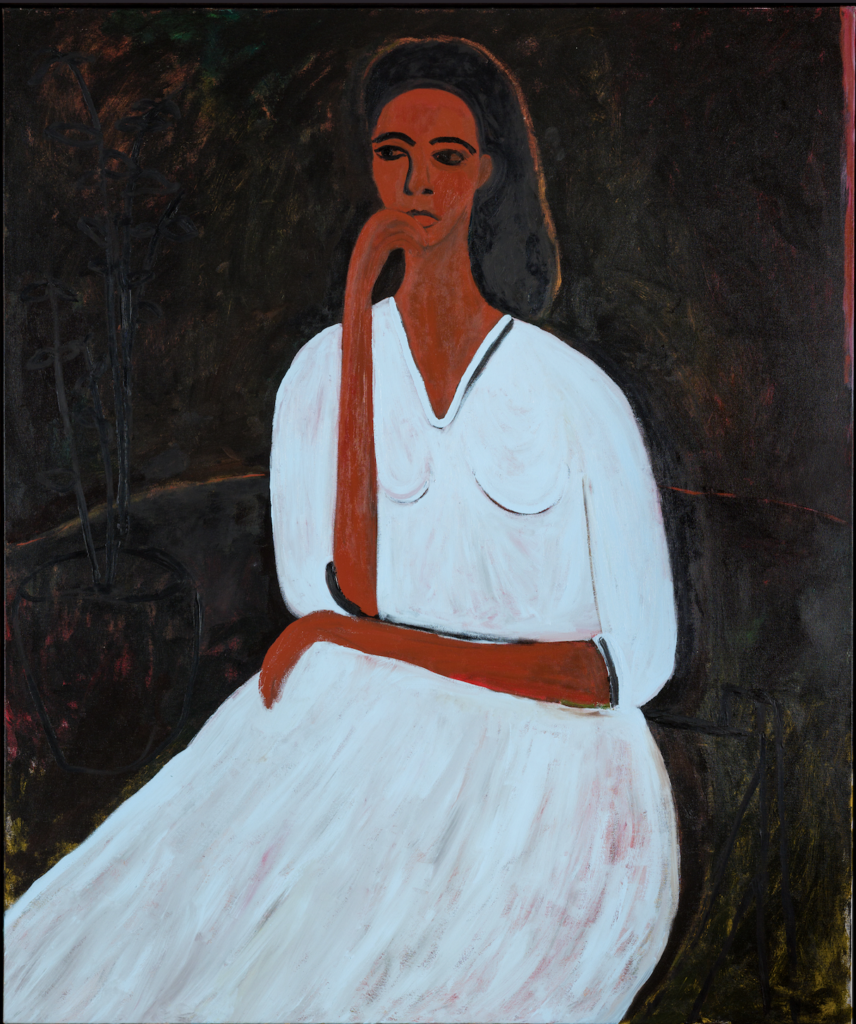
Another gallery on our list with multiple brick-and-mortar locations, Mariane Ibrahim has galleries in Chicago, Paris and Mexico City. Mariane Ibrahim’s cross-continental span allows it to highlight artists throughout the diaspora. It’s special on this list for highlighting Afro-Latin, African American, and African-contemporary art across media. Emma McKee, director of Mariane Ibrahim Chicago, gives her perspective.
LB: What is Mariane Ibraham Gallery’s relationship with giving artists full artistic agency to express their ideas?
Emma McKee: All of our artists are constantly each other’s biggest advocates. I think that’s something that we felt is really important when building energy, that we all operate as a whole, and we support each other as a whole. And I think that our artists feel a sense of “one artist’s success is all of our success.”
LB: I like how, out the gate, you emphasize that one artist’s success is like everyone’s success in the ecosystem of the gallery. With that in mind, how does your gallery evaluate success?
EM: The main point of success would be an artist’s growth and not just from a monetary perspective, I think growth in terms of interest and expansion within the institutional realm, you know, institutional projects or exhibitions, but also institutional acquisitions. I think that we at Mariane’s are really focused on our artists changing the future of the art history canon. I think that part of that is aligned with the idea of growth. Another aspect of that is that success and growth are based on our artists challenging themselves and always pushing for an expansion or further message of whatever ideas they’re building on.
- Kente Royal Gallery (Harlem, New York)
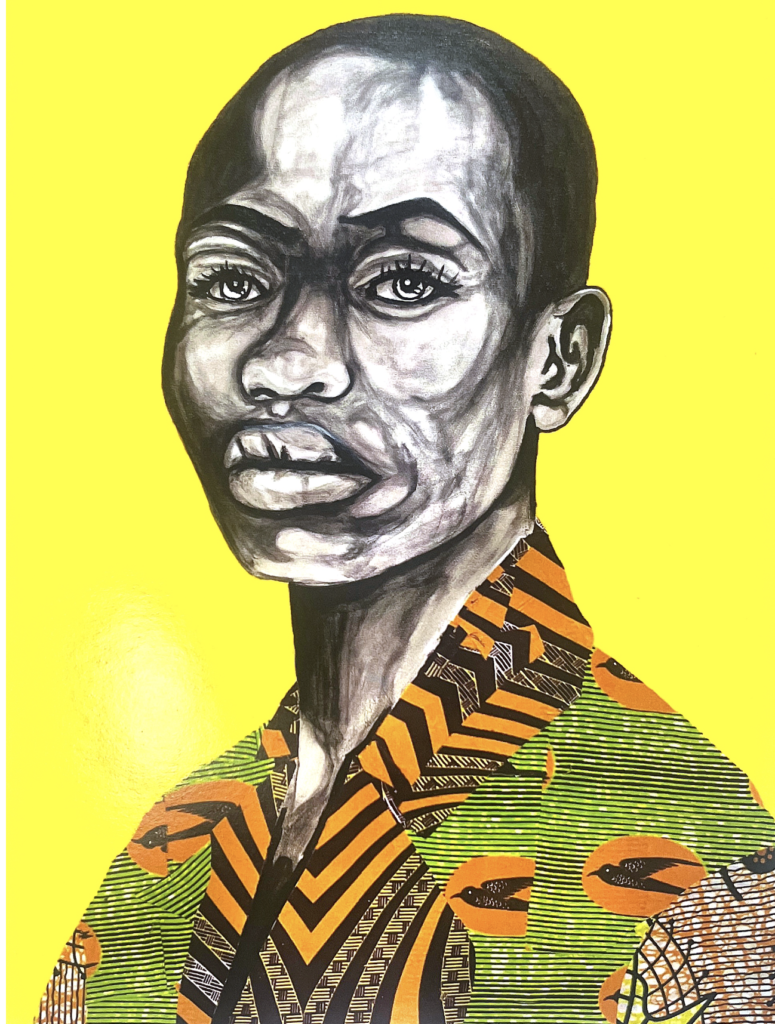
Founded by the couple Phyllis and Dodji Gbedemah, this gallery is, quite literally, a homecoming. It was founded in 2018 after the Gbedemas returned from Ghana and chose art as the medium to nourish the African diaspora. The gallery is positioned in Harlem, New York, on Adam Clayton Powell Jr. Blvd. According to 2021 data from the NYU Furman Center, 44.2% of Central Harlem’s 128,792-person population is Black. This makes Kente Royal Gallery one of few leading global galleries that serves Manhattan’s Black community, which has around 56,926 Black residents.
LB: How do you all help develop artists?
Phyllis Gbedemah: Teaching them and letting them know how important it is to develop and cultivate relationships. We get them involved in other shows, where perhaps they have sold pieces for more than they ever sold before. And they’ve been in the business a lot longer than my husband. We’re just going on four years. Some people have been painting for 10 years or more, and I really believe that being associated with Kente Royal Gallery has enabled them to sell pieces of their art collections for more than they’ve ever sold.
LB: If you had to use three words to describe your gallery, which words would you use and why?
PG: One word that I would use would have to be empowering. The reason we use that word is because it’s given a lot of hope and encouragement to artists who have never had an exhibit before, as well as people purchasing their pieces. Another word that I will use to describe the gallery is community. You know, community doesn’t always equal finances or sales, but I like the fact that we are really loved in the community, and we love the community. They love us, and we love them right back. Empowering, communal and inspirational.
- Heath Gallery (Harlem, New York)
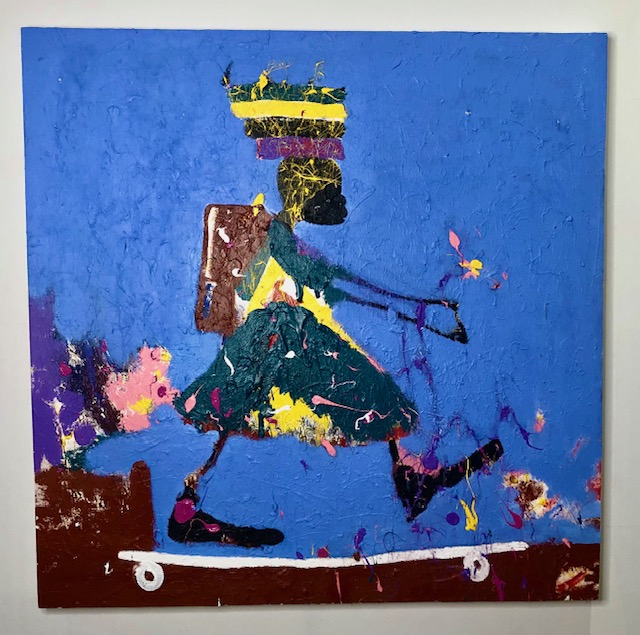
Heath Gallery is another gallery that serves the majority of the Black Harlem neighborhood. Founded in 2002, Heath has platformed Black artists to show that there’s appreciation and space for Black art outside of downtown. The gallery was founded by the husband-and-wife team Saundra Heath and Thomas Edwin.
LB: Will you tell me the story of your gallery coming to be?
Saundra Heath: We were in the process of renovating a townhouse from Harlem; a brownstone is what you call them here. We decided that we would use the parlor level of the brownstone to show his (Thomas Edwin’s) work. We knew nothing about running a gallery or running a small business but decided that it’s up to us. Like if you had a wall where you could hang the work, and people could see it, and there was enough room for people to stand back and see the work, that would be how we’re going to do it. So that’s what we did. And that’s how we got started.
We were very quickly running into people who suggested that there wasn’t an art scene in Harlem. We decided, well no, uh-uh, we’re not going to show just his work. We’re going to show the work of other artists to prove it’s not true that our artists are only downtown. But we also wanted to make a new thing for our community to experience the gallery environment. And so, we opened our doors of the gallery in 2002 and have continued to operate doing it our way.
LB: What else would be important to consider when highlighting Heath Gallery?
SH: I think just the question about what’s next. That’s something that we’re sitting with. We’re not overwhelmed with Black-owned galleries, but certainly, there are more. While there are certainly more opportunities than there were, we always want to think about what are the gaps, what is it that we can contribute, where are we, and where and how are we best. That’s what I’m taking the time to contemplate, like where are things going? And where can we best serve?
- E&S Gallery (Louisville, Kentucky)

This gallery is significant for both its size and the way it specializes in guiding artists through the full art distribution process. E&S Gallery provides museum-quality framing with custom framers who have an average of 30 years of experience. E&S has around 11,000 square feet, which makes it one of the largest Black-owned galleries in the U.S. Co-Founders Walter and Cathy Shannon shared how he moved from California to Kentucky to seek more opportunities in selling art. He’s been selling art since the 1970s.
LB: What changed after moving from California to Louisville, Kentucky for you to stay? It’s coming up on almost 40 years.
Walter Shannon: I was born and raised in Memphis. I wanted to live near my parents because they were getting older at the time. And I had a sister who still lives here and a brother-in-law. This was a good fit. I was burnt out in California. So, when I moved here, it took me about four months to get the gallery up and running, and then I met Cathy. We married in ‘97. She was a marketing executive with the local power company. She joined me in the marketing area about a year after we got married, and the rest is history. It’s been a great fit in the middle of the country.
LB: Outside of being at the center of things in Kentucky, what distinguishes you all from other galleries?
Cathy Shannon: One of the few African American owned-and-operated art and custom framing galleries, with our clients that will ship us artwork just to do the framing. Walter’s background in design helps in perfecting how the artwork is enhanced by quality custom framing and conservation quality framing. Our motto is “buy what you like, just know what you’re buyin’.” If we have a client that is in another gallery or looking at buying a piece, we’re happy to have the question that they may have about a good buy or whether there’s another outlet for a similar piece. So, we’re really committed to serving our customers, and we’re also committed to doing the best we can for our artists.
- Stella Jones (New Orleans, Louisiana)
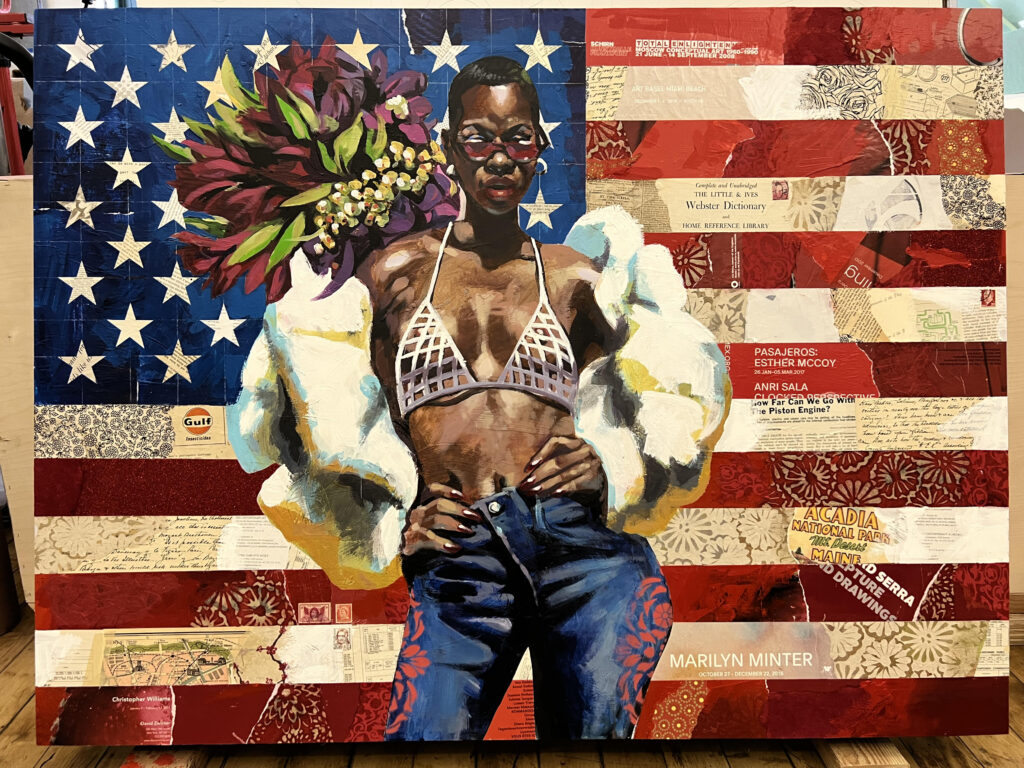
The Stella Jones Gallery in New Orleans is a labor of love. The gallery is a namesake to its founder, yet it was both her brainchild and that of her late husband, who helped define its business strategy. Stella Jones is a Black-owned gallery, and in the founder’s words, it is as if a gallery were soul food. This is likely because of its focus on making Caribbean, African contemporary, and African American accessible to its community. Stella Jones emphasizes making relationships through art education rather than focusing on commerce.
LB: How do you define success at your gallery?
Stella Jones: I’m more successful than I thought I would be when I first opened the gallery, because I was a physician and not a gallerist. My husband also had a background in business. In terms of our clients, we’ve been able to meet people where they are. We had our first opening, which was $250-to-$500. So, we were meeting clients where they were, because a lot of people in New Orleans hadn’t had that experience. African Americans going into a gallery and having someone really talk to them, and lead them around, and talk to them about the difference between an acrylic on canvas or lithograph or sales graph and what all of the information at the bottom of a print means.
LB: What’s your relationship with empowering your artists to have creative agency over their work?
SJ: Since so many of my artists, like Elizabeth Catlett and Jacob Lawrence and Samella Lewis and a lot of others have gotten older, it was so much easier for me to work with those people than it is to work with younger artists now. A lot of them are not as far advanced as they think they are, especially to somebody like me who’s worked with the masters for so long.
LB: If you had to use three words to define your gallery, what three words would you use and why?
SJ: We’re just an ordinary gallery. Maybe people don’t think of us that way, but that’s the way we think about sales. We’re inviting. We Are Necessary.
- ZuCot (Atlanta, Georgia)
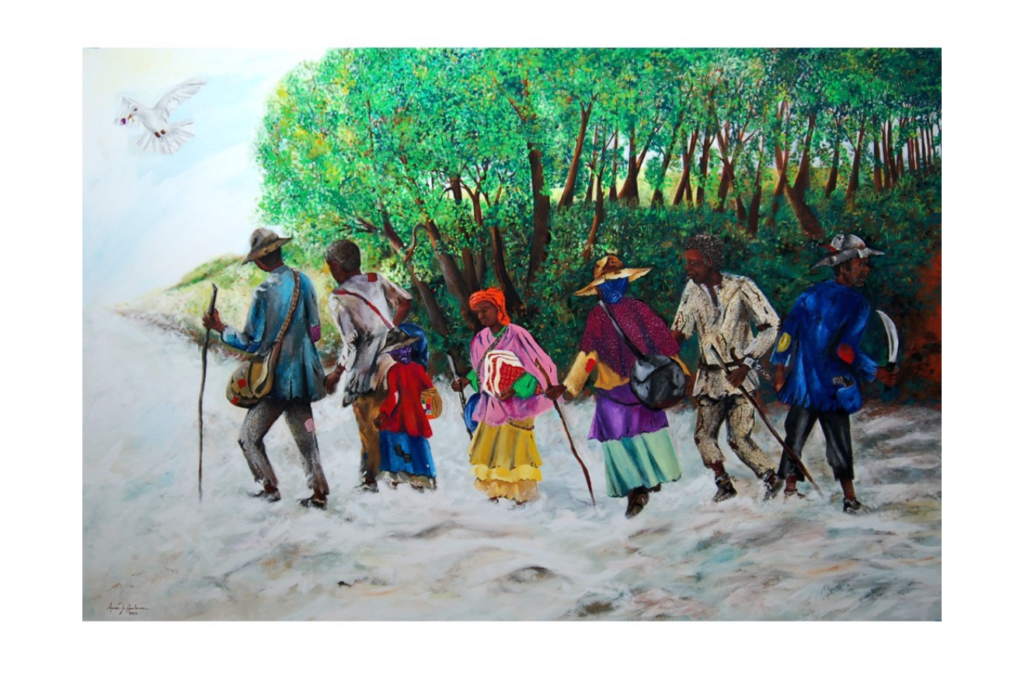
ZuCot Gallery was started by brothers Onaje and Omari Henderson and Troy Taylor. The Hendersons’ father was an established artist. They took up the “family business” by creating the largest Black-owned gallery in the Southeast, although their impact expands beyond size. ZuCot Gallery serves a niche demographic in the Black experience in art and culture: middle-aged artists.
LB: What’s your dedication to seasoned artists and middle-aged artists?
Onaje Henderson: We want mid-career typically; seasoned artists. We work with both (middle-aged and young artists) and the reason why, number one, we’re still wondering how a 75-year-old Black artist can be discovered, right? Like, they have been painting this whole time, so who’s discovering them? That part is always interesting. There are artists who have been saying amazing things for a long time.
For us, our dedication is to strong narratives and good work. When I say good work, I mean start-offs, materials-wise, all those things that we can stand behind. Because it’s one thing to have a great concept and put it down, but now I want to know stuff. Like, what’s the material? We do have some younger artists. Even then though, they’re very aware of what we’re looking for, and we help them along the way.
LB: What is ZuCot Gallery’s relationship with giving artists creative agency to express their ideas fully?
OH: One thing I always say is that your (the artist’s) job is great. My job is to figure out how to sell it. There’s creativity on both parts and to be able to position that story properly. I think with us, now with our partnership with Microsoft, that’s allowed us to even go further in that direction with our virtual galleries that are being built, and then, how we can layer stories inside of that. So now, you can hear the narrative from the artists themselves, or you can see the process behind things, or you understand more. So, if you can’t see it in person, the second best way to do it is in the virtual gallery, right? Because you can now kind of maneuver around the piece. You hear the artist talking about the piece, and you get familiar with who that person is. It’s all those things where it makes that connection happen.
LB: How do you evaluate success?
OH: For us, the value of success is tricky. At the end of the day, of course, we are in business, so successful, of course, has that love, but the other piece that’s really important is this awakening that’s beginning to happen. How are we normalizing culture and the idea of collecting culture? What we are seeing now is allowing more of us to understand the importance of owning our things, and being able to tell our story. Being able to appreciate, from a non-economic standpoint, someone else’s culture. The narrative is the narrative. So, if there’s anything in this that you feel you need to change to make you feel comfortable, don’t do that.
- Mindy Solomon (Miami, Florida)
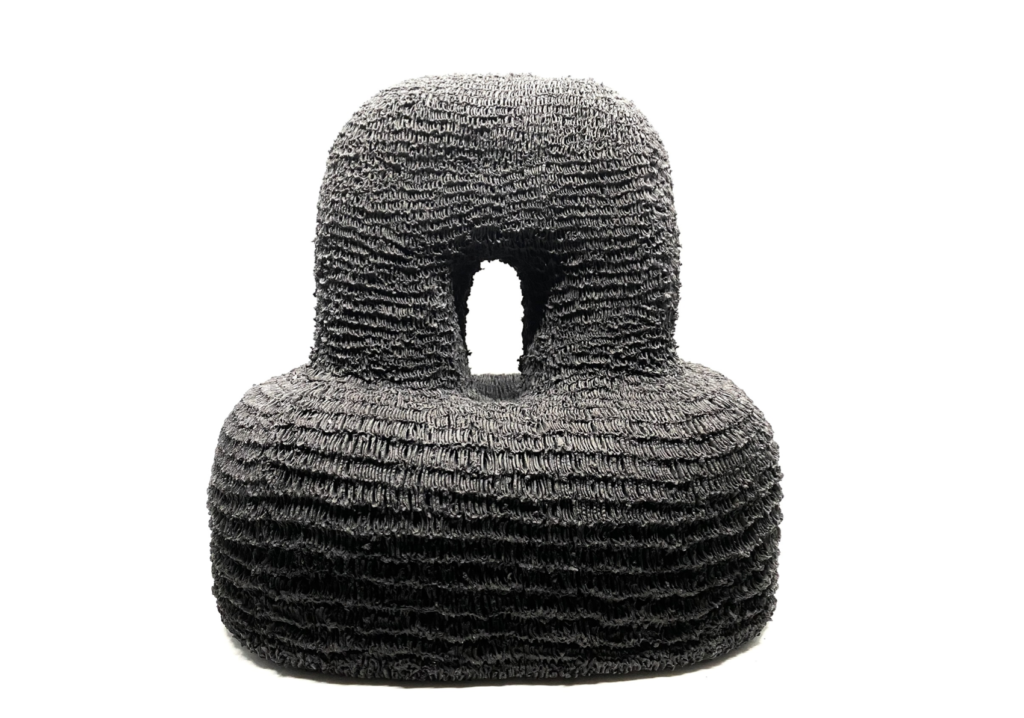
Mindy Solomon Gallery in Miami was established in 2009. Featured works at Mindy Solomon straddle art and design by curating exhibitions across media like painting, textiles, videos, sculpture and more. Conversation with the namesake founder, Mindy Solomon, was critical, intimate and thoughtful.
LB: There are so many different galleries and museums, places where people can find art exhibits. What makes the Mindy Solomon Gallery unique?
Mindy Solomon: The program is an intersection between contemporary art and design. So, there’s a lot of material-based work for people to experience, not just paintings on the wall. There are things that they would not probably normally see in a lot of galleries here.
LB: Are there any challenges you are glad Mindy Solomon has overcome this year or in the last few years?
MS: If you decide that you want to follow your own vision, that means that you’re stepping away from the herd, which we say, you have the responsibility to try and inspire people to appreciate and potentially want to possess the things that you think are worth looking at. And that’s a challenge. It’s kind of the difference between blockbuster movies that have a certain level of mediocrity, as opposed to special independent films that are more cerebral. It’s trying to engage people to think a little more uniquely about what they’re experiencing.
- 11.N’Namdi Gallery (Miami, Florida)
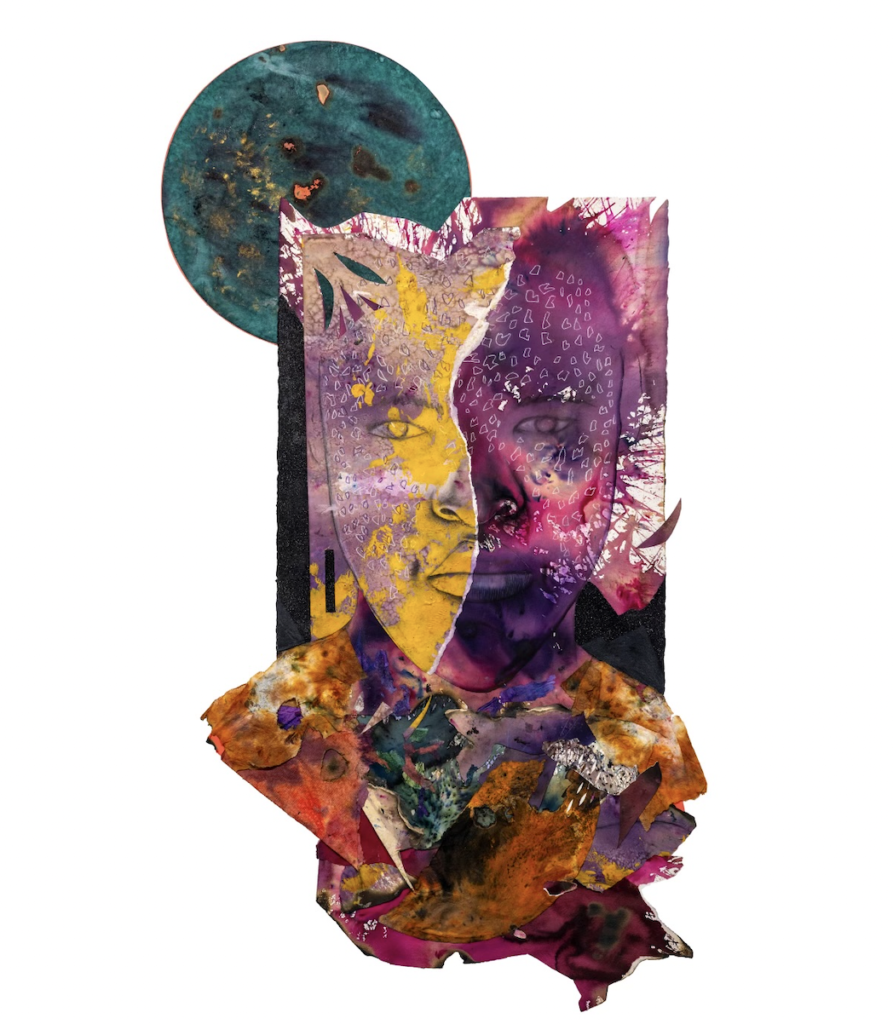
N’Namdi Gallery in Miami was founded by Morehouse College alumnus Jumaane N’Namdi. His gallery follows his father’s gallery by a similar name, the G.R. N’Namdi Gallery in Detroit. By his intention to teach people how to curate and collect art, N’Namdi’s practice as a director and gallery owner embodies the axiom of teaching a person to fish. This way, he raises the cultural standard of appreciation by encouraging Black people to collect, appreciate and take ownership of their art.
LB: What’s your relationship with giving artists full creative freedom or full agency to express themselves and their ideas?
Jumaane N’Namdi: All artists did have that freedom. It’s just that nowadays, people in their mid-20s are getting so much attention. And what happens is the artist thinks they’re doing great work. And it could be good work. They have to understand that everything they do is going to be good because they’re artists. So, what I try to do is give them that time while at the same time supporting them by selling the work, but I can also sell whatever they make because my clients understand art in general.
LB: If your gallery is successful, what does that success mean to you?
JN: How many collectors I’ve had to create. How many people have I taken from not understanding art to understanding art? How many lives have changed around art, because it’s about selling it? No, I just pay bills myself here and there. But my thing is that I collect art. I really collect art and sell art personally. I think it’s important for people to collect art. If you don’t have art, that’s why they’re here, for me to help them build a collection. So, if people come, they don’t actually know people are coming to be in their collection, because they have a collection that I created.
Among these 11 global galleries, which are positioned throughout the U.S., London and the African continent, the through-line connects at community. Despite their differences, what makes them similar is a dedication to education and passing the torch of art literacy, appreciation and agency across generations and borders.







